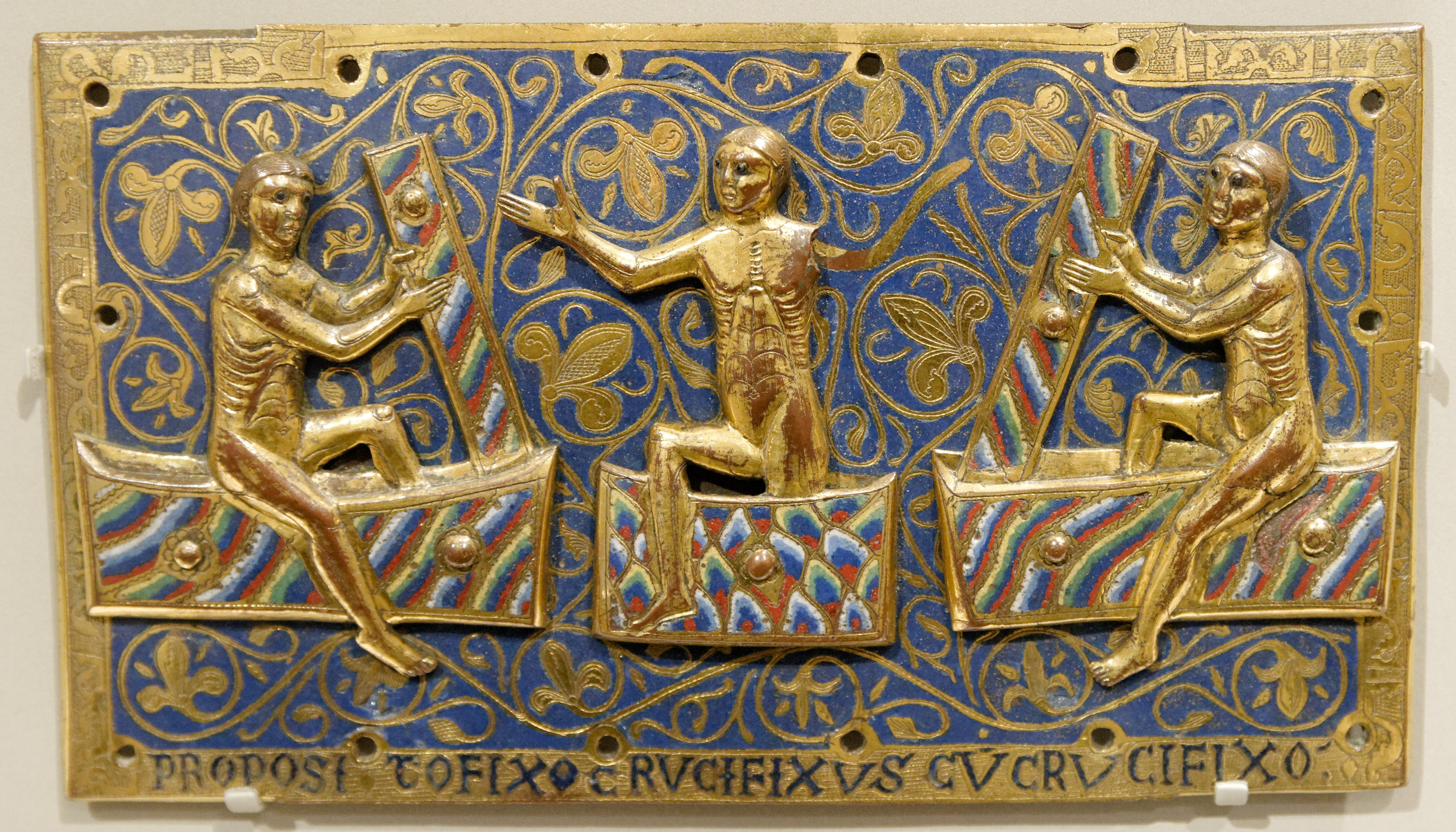|
Woman With Seven Sons
The woman with seven sons was a Jewish martyr described in 2 Maccabees 7 and other sources, who had seven sons that were arrested (along with her) by Antiochus IV Epiphanes, who forced them to prove their respect to him by consuming pig meat. When they refused, he tortured and killed the sons one by one in front of the unflinching and stout-hearted mother. The story likely occurred around the beginning of the religious persecutions in 167-166 BCE. Although unnamed in 2 Maccabees, the mother is known variously as Hannah, Miriam, Solomonia, and Shmouni. Narrative 2 Maccabees Shortly before the revolt of Judas Maccabeus (2 Maccabees 8), Antiochus IV Epiphanes arrested a mother and her seven sons, and tried to force them to eat pork. One of the brothers said, on behalf of everyone, that even if they were all to die, they would not break the law. The angry king ordered to heat up the pans and cauldrons, and he ordered the first brother to have his tongue cut off, the skin to be remo ... [...More Info...] [...Related Items...] OR: [Wikipedia] [Google] [Baidu] |
Resurrection
Resurrection or anastasis is the concept of coming back to life after death. In a number of religions, a dying-and-rising god is a deity which dies and is resurrected. Reincarnation is a similar process hypothesized by other religions, which involves the same person or deity coming back to live in a different body, rather than the same one. The resurrection of the dead is a standard eschatological belief in the Abrahamic religions. As a religious concept, it is used in two distinct respects: a belief in the resurrection of individual souls that is current and ongoing ( Christian idealism, realized eschatology), or else a belief in a singular resurrection of the dead at the end of the world. Some believe the soul is the actual vehicle by which people are resurrected. The death and resurrection of Jesus is a central focus of Christianity. Christian theological debate ensues with regard to what kind of resurrection is factual – either a ''spiritual'' resurrection ... [...More Info...] [...Related Items...] OR: [Wikipedia] [Google] [Baidu] |
Syriac Christianity
Syriac Christianity ( syr, ܡܫܝܚܝܘܬܐ ܣܘܪܝܝܬܐ / ''Mšiḥoyuṯo Suryoyto'' or ''Mšiḥāyūṯā Suryāytā'') is a distinctive branch of Eastern Christianity, whose formative theological writings and traditional liturgies are expressed in the Classical Syriac language, a variation of the Aramaic language. In a wider sense, the term can also refer to Aramaic Christianity in general, thus encompassing all Christian traditions that are based on liturgical uses of Aramaic language and its variations, both historical and modern. Along with Greek and Latin, Classical Syriac was one of the three most important languages of Early Christianity. It became a vessel for the development of a distinctive Syriac form of Christianity which flourished throughout the Near East and other parts of Asia during Late Antiquity and the Early Medieval period, giving rise to various liturgical and denominational traditions, represented in modern times by several Churches which contin ... [...More Info...] [...Related Items...] OR: [Wikipedia] [Google] [Baidu] |
Armenian Apostolic Church
, native_name_lang = hy , icon = Armenian Apostolic Church logo.svg , icon_width = 100px , icon_alt = , image = Էջմիածնի_Մայր_Տաճար.jpg , imagewidth = 250px , alt = , caption = Etchmiadzin Cathedral, the mother church of the Armenian Apostolic Church , abbreviation = , type = , main_classification = Eastern Christian , orientation = Oriental Orthodox , scripture = Septuagint, New Testament, Armenian versions , theology = Miaphysitism , polity = Episcopal , governance = Mother See of Holy Etchmiadzin , structure = , leader_title = Head , leader_name = Catholicos of All Armenians Karekin II , leader_title1 = , leader_name1 = , leader_title2 = , leader_name2 = , leader_title3 = , leader_name3 = , associati ... [...More Info...] [...Related Items...] OR: [Wikipedia] [Google] [Baidu] |
Eastern Orthodox
Eastern Orthodoxy, also known as Eastern Orthodox Christianity, is one of the three main branches of Chalcedonian Christianity, alongside Catholicism and Protestantism. Like the Pentarchy of the first millennium, the mainstream (or " canonical") Eastern Orthodox Church is organised into autocephalous churches independent from each other. In the 21st century, the number of mainstream autocephalous churches is seventeen; there also exist autocephalous churches unrecognized by those mainstream ones. Autocephalous churches choose their own primate. Autocephalous churches can have jurisdiction (authority) over other churches, some of which have the status of " autonomous" which means they have more autonomy than simple eparchies. Many of these jurisdictions correspond to the territories of one or more modern states; the Patriarchate of Moscow, for example, corresponds to Russia and some of the other post-Soviet states. They can also include metropolises, bishoprics, pa ... [...More Info...] [...Related Items...] OR: [Wikipedia] [Google] [Baidu] |
Miriam (given Name)
Miriam () is a feminine given name recorded in Biblical Hebrew, recorded in the Book of Exodus as the name of the sister of Moses, the prophetess Miriam. Spelling variants include French ''Myriam'', German ''Mirjam, Mirijam''; hypocoristic forms include Mira, Miri and Mimi (commonly given in Israel). The name's etymology is unclear. Since many Levite names are of Egyptian origin, the name could come from the Egyptian ''mr'' "love", as in the Egyptian names ''mry.t-jmn'' (Merit-Amun) "beloved of Amun" and ''mry.t-rꜥ'' (Merytre) "beloved of Ra". An older Grecian pronunciation of this name, ''Maryām'' (Μαριάμ), is found in the Greek Old Testament (3rd century BC) and in the New Testament manuscripts as the name of several women, including Mary, mother of Jesus and Mary Magdalene. Variants of this name include Greek and Latin '' Maria'', whence French ''Marie'' and English '' Mary''. Variant Maryam Mary, mother of the Jesus of the New Testament, bore a Ju ... [...More Info...] [...Related Items...] OR: [Wikipedia] [Google] [Baidu] |


